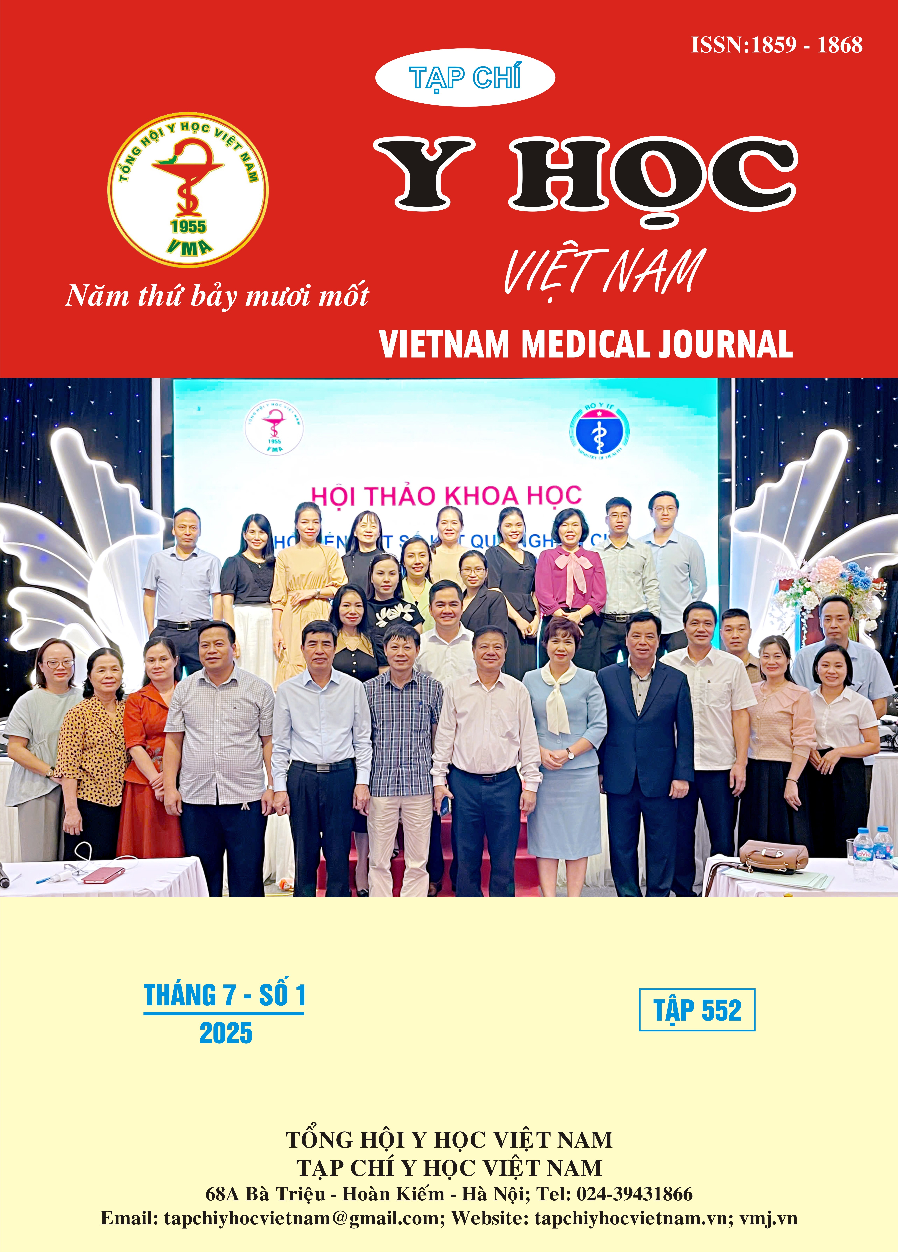ĐẶC ĐIỂM BỆNH LAO TRẺ EM ĐIỀU TRỊ TẠI KHOA NHI – BỆNH VIỆN PHỔI TRUNG ƯƠNG
Nội dung chính của bài viết
Tóm tắt
Mục tiêu: Mô tả các đặc điểm về mô hình bệnh lao trẻ em điều trị tại khoa Nhi – Bệnh viện Phổi Trung ương trong 2 năm 2017 và 2018. Phương pháp nghiên cứu: Nghiên cứu mô tả cắt ngang. Kết quả: Nghiên cứu có 407 bệnh nhi, nhóm tuổi gặp nhiều nhất là nhóm dưới 5 tuổi (45,5%) và 36,1% có tiền sử tiếp xúc nguồn lây lao phổi; thời gian phát hiện bệnh thường từ 2 – 4 tuần (31,5%). Trong lao trẻ em, lao phổi chiếm đa số (65,6%) và tỷ lệ được chẩn đoán có bằng chứng vi khuẩn chiếm 37,8% (lao phổi là 42,7% và lao ngoài phổi là 28,6%). Lao trẻ em gặp chủ yếu là lao một cơ quan (72,7%) (trong đó lao phổi 55,1%); lao hai cơ quan là 23,1%; lao 3 cơ quan là 3,9% và có 01 bệnh nhi mắc lao 04 cơ quan. Đối với lao phổi, bằng chứng vi khuẩn được phát hiện từ bệnh phẩm dịch dạ dày (20,6%), tiếp đến là bệnh phẩm đờm (8,6%). Trong chẩn đoán lao trẻ em ở cả nhóm chẩn đoán có bằng chứng vi khuẩn và nhóm chẩn đoán không có bằng chứng vi khuẩn, đối với lao phổi, cặp 2 yếu tố lâm sàng + CĐHA thường gặp nhất trên lâm sàng (63,7%) và tương tự với lao ngoài phổi là cặp hai yếu tố lâm sàng + CLS (84,3%). Các cặp yếu tố này có giá trị trong thực hành lâm sàng ra quyết định chẩn đoán lao trẻ em khi không tìm được bằng chứng vi khuẩn.
Chi tiết bài viết
Từ khóa
Lao trẻ em, lao phổi, lao ngoài phổi
Tài liệu tham khảo
2. Moon TD, Nacarapa E, Verdu ME, et al. Tuberculosis Treatment Outcomes Among Children in Rural Southern Mozambique: A 12-year Retrospective Study. Pediatr Infect Dis J. 2019;38(10): 999-1004. doi:10.1097/ inf.0000000000002435. Published October, 2019. Accessed June 22, 2022.
3. Hoàng Thanh Vân. Nghiên cứu đặc điểm lâm sàng, cận lâm sàng lao phổi trẻ em và tính kháng thuốc của vi khuẩn. Luận án tiến sĩ y học. 2011. Trường Đại học Y Hà Nội.
4. Silva JB, Santos JC, Barbosa L, Carvalho I. Tuberculosis in the paediatric age group: a reflection on transmission. An Pediatr (Engl Ed). 2021;94(6): 403-411. doi:10.1016/j.anpede. 2020.12.002. Published December 25, 2020. Accessed August 22, 2022.
5. Alavi SM, Salmanzadeh S, Bakhtiyariniya P, et al. Prevalene and treatment outcome of pulmonary and extrapulmonary pediatric tuberculosis in southwestern Iran. Caspian J Interm Med. 2015;6(5):213-219. https://pubmed. ncbi.nlm.nih.gov/ 26644895/. Published September 1, 2015. Accessed June 22, 2022.
6. WHO. WHO consolidated guidelines on tuberculosis: Module 5: Management of tuberculosis in children and adolescents. 2022. WHO Guidelines Approved by the Guidelines Review Committee. https://www.who.int/ publications/i/item/9789240046764. Published March 18, 2022. Accessed February 22, 2023.
7. Chương trình chống lao quốc gia. Hướng dẫn chẩn đoán, điều trị và dự phòng bệnh lao. 2024.
8. Marais BJ, Gie RP, Hesseling AC, et al. A refined symptom-based approach to diagnose pulmonary tuberculosis in children. Pediatrics. 2006;118(5):1350-1359. https://doi.org/10.1542/ peds.2006-0519. Published November 1, 2006. Accessed June 10, 2016.


